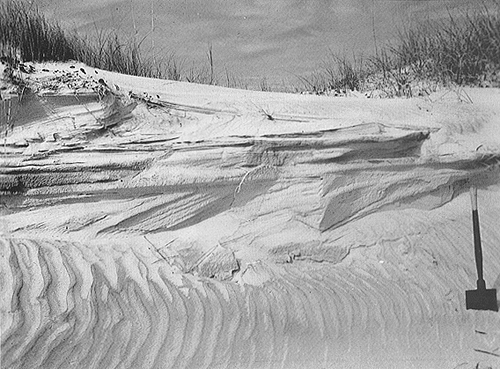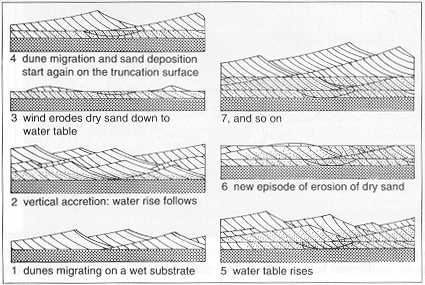

Eolian dunes: internal bedding
Plate 25


Eolian dunes: internal bedding
Plate 25
A trench cut in a dune along the wind direction shows the internal bedding (we see the upper portion only). In the lower part of the section, a set of dipping laminae (foreset laminae) reflects the leftward migration of the dune. Unconformably lying over it, are sub horizontal laminae and laminae dipping in opposite directions with low angles. The truncation of the foreset also represents the dune migration, in particular the passage of the stoss side, dominated by erosion or non deposition: the foreset laminae were removed, except for the lowermost part that remained buried in the ground. The low-angle, roughly parallel lamination could indicate interdune deposits. Interdune areas are relatively depressed zones intervening between dunes; they are occupied by a thin sand pavement and are sometimes invaded by water, in which case some mud can be interbedded with the sand.
Near the top of the section, a new foreset appears, again truncated by low-angle laminae dipping upwind. Low-angle laminae could also represent a limited episode of deposition on the stoss side of a dune.
Another possible explanation of the abrupt truncation of foreset laminae lies in the presence of a water table (inset); in that case, water-saturated sand offers more resistance to wind erosion than dry sand, and is preferentially preserved. Exceptionally, giant foreset bedding is formed and preserved (see color photo 14).
| Inset: modified from Collinson and Thompson 1982. |
| Photo: A. Bosellini 1992. |